Landing
For a bird to launch, it has to accelerate to flight speed. For a bird to land, it has to decelerate, and yet maintain lift until it arrives at just the right spot. This can be tricky, and birds have to learn how to do it. The problem of arriving at the right spot with zero velocity is crucial for those birds landing on a branch or a nest, but water birds usually avoid the problem by merely slowing and then skidding to a stop on the water surface.
Birds sometimes deploy their alulae (singular, alula) when landing. These little extensions at the wrist of the wing seem to increase lift when the wings would otherwise stall.
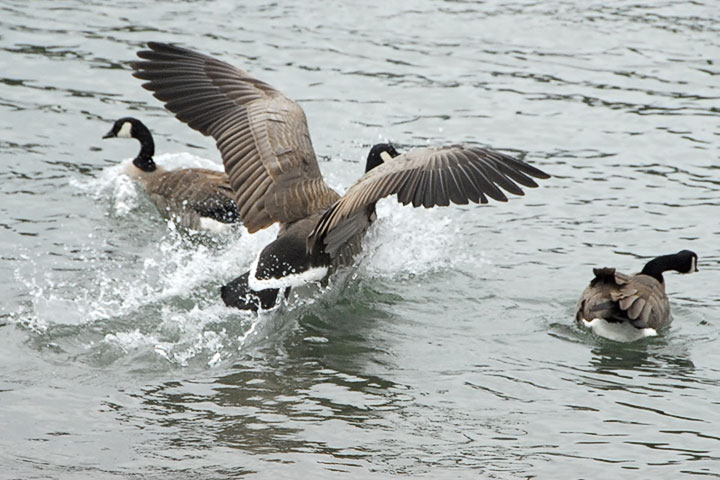 For this Canada Goose landing on water is a relatively easy process: it tips its wings up to serve as an air break and then skids to a stop on the water. Of course, if there is another bird in the way, as was the case here, it might be a messy landing, but usually it works smoothly. Most water birds prefer to land on water; it is easier than doing so on land.
For this Canada Goose landing on water is a relatively easy process: it tips its wings up to serve as an air break and then skids to a stop on the water. Of course, if there is another bird in the way, as was the case here, it might be a messy landing, but usually it works smoothly. Most water birds prefer to land on water; it is easier than doing so on land.
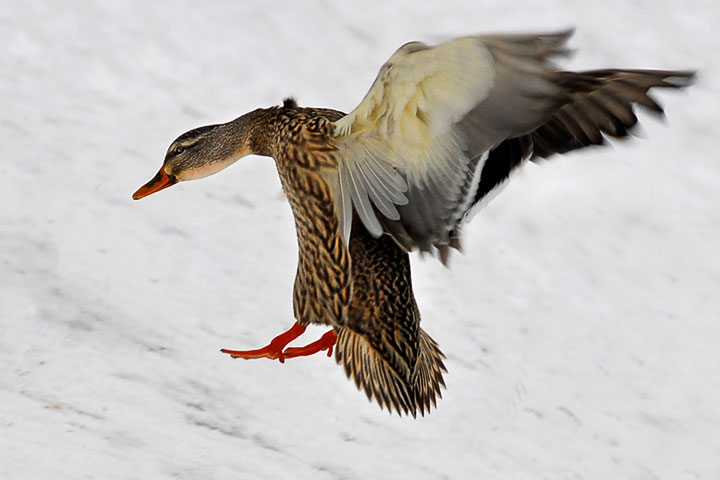 For a dabbling water bird such as this female Mallard, second best to landing on water is landing on a smooth surface such as this snow. The wings are stalled and the feet are outstretched to touch down.
For a dabbling water bird such as this female Mallard, second best to landing on water is landing on a smooth surface such as this snow. The wings are stalled and the feet are outstretched to touch down.
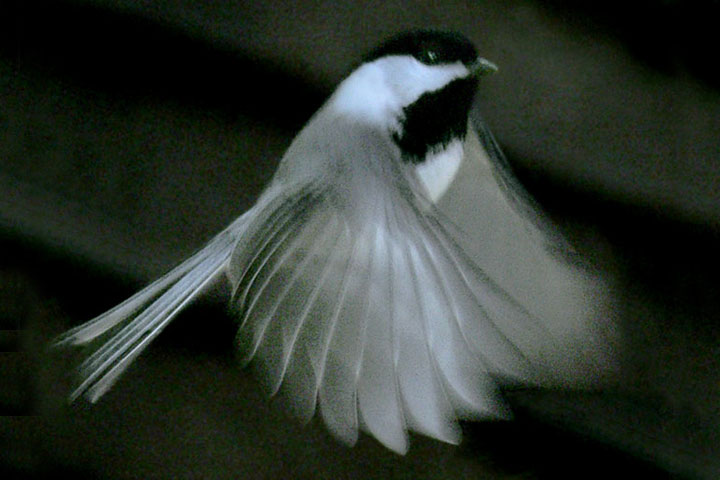 The problem faced by perching birds, such as this Black-capped Chickadee is to stall the wings just prior to arriving at the target perch.
The problem faced by perching birds, such as this Black-capped Chickadee is to stall the wings just prior to arriving at the target perch.
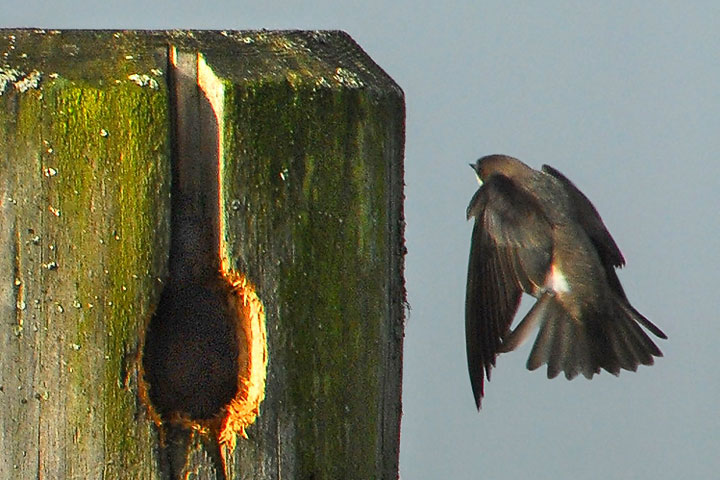 A Tree Swallow is about to land on the edge of the cavity in a piling. It is tipped back in a stall, its alulae are deployed, and its tail is spread to provide extra drag and directional stability.
A Tree Swallow is about to land on the edge of the cavity in a piling. It is tipped back in a stall, its alulae are deployed, and its tail is spread to provide extra drag and directional stability.
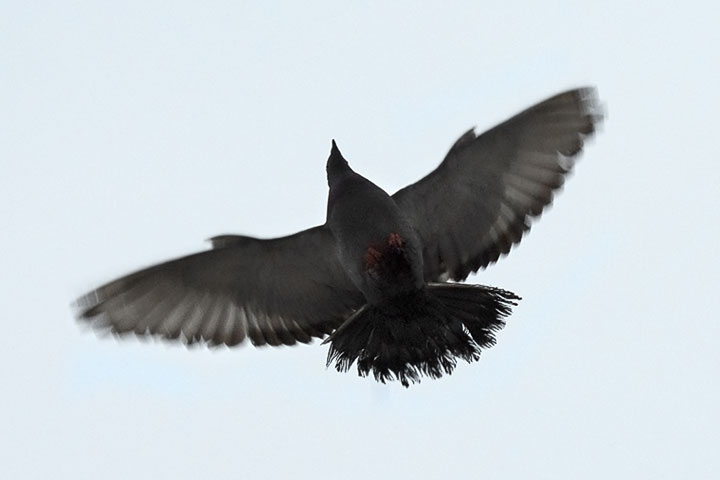 This Rock Pigeon has deployed its alulae (the extensions half way out the wing). Birds seem to use the alulae as a way to maintain lift whenever their wings begin to stall. It is unclear how the alulae increase the lift, but a likely mechanism is that they instigate a leading edge vortex along the hand wing. However it is accomplished alulae are frequently seen as a bird stalls just prior to a landing.
This Rock Pigeon has deployed its alulae (the extensions half way out the wing). Birds seem to use the alulae as a way to maintain lift whenever their wings begin to stall. It is unclear how the alulae increase the lift, but a likely mechanism is that they instigate a leading edge vortex along the hand wing. However it is accomplished alulae are frequently seen as a bird stalls just prior to a landing.
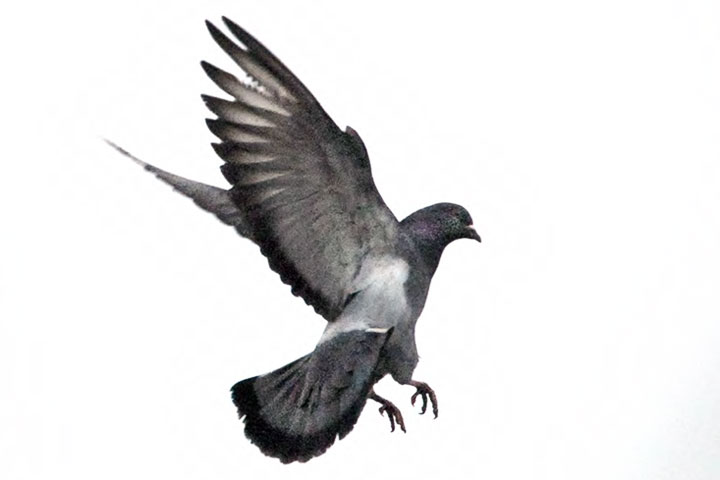 This Pigeon about to land on an overhead wire. It tips its wings back at a large attach angle so they stall, but attempts to maintain lift by deploying its alulae. Its feet are forward ready to grasp the wire.
This Pigeon about to land on an overhead wire. It tips its wings back at a large attach angle so they stall, but attempts to maintain lift by deploying its alulae. Its feet are forward ready to grasp the wire.
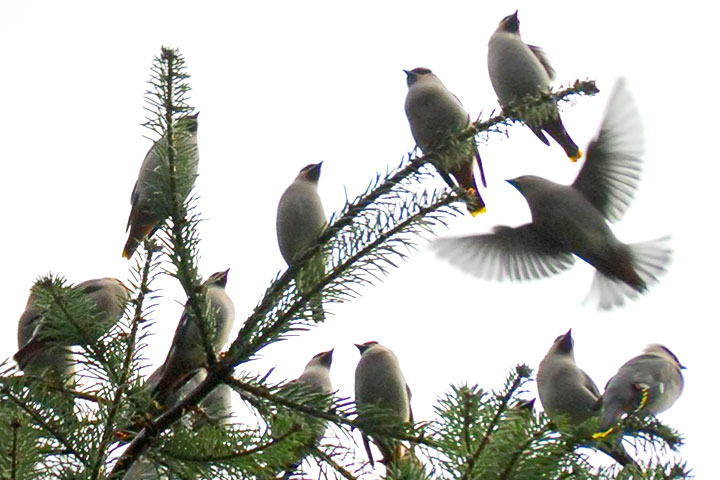 A Bohemian Waxwing spreads its wings, tail and alulae as it prepares to land on a branch.
A Bohemian Waxwing spreads its wings, tail and alulae as it prepares to land on a branch.
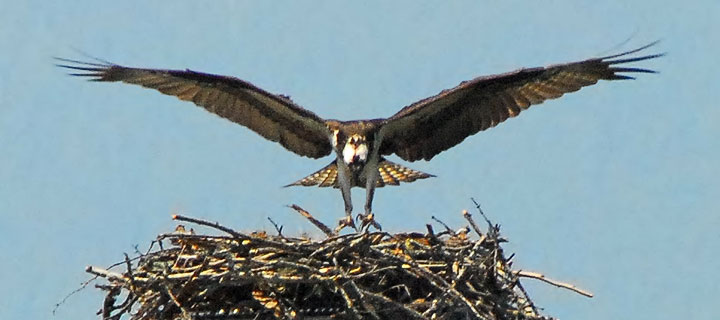 An Osprey returns to its nest. Its wings are tipped back into a stall; its tail is spread as a break and to provide directional stability; it head is tipped down toward its target landing point; its feet are outstreached to take the weight of its landing.
An Osprey returns to its nest. Its wings are tipped back into a stall; its tail is spread as a break and to provide directional stability; it head is tipped down toward its target landing point; its feet are outstreached to take the weight of its landing.
![]()